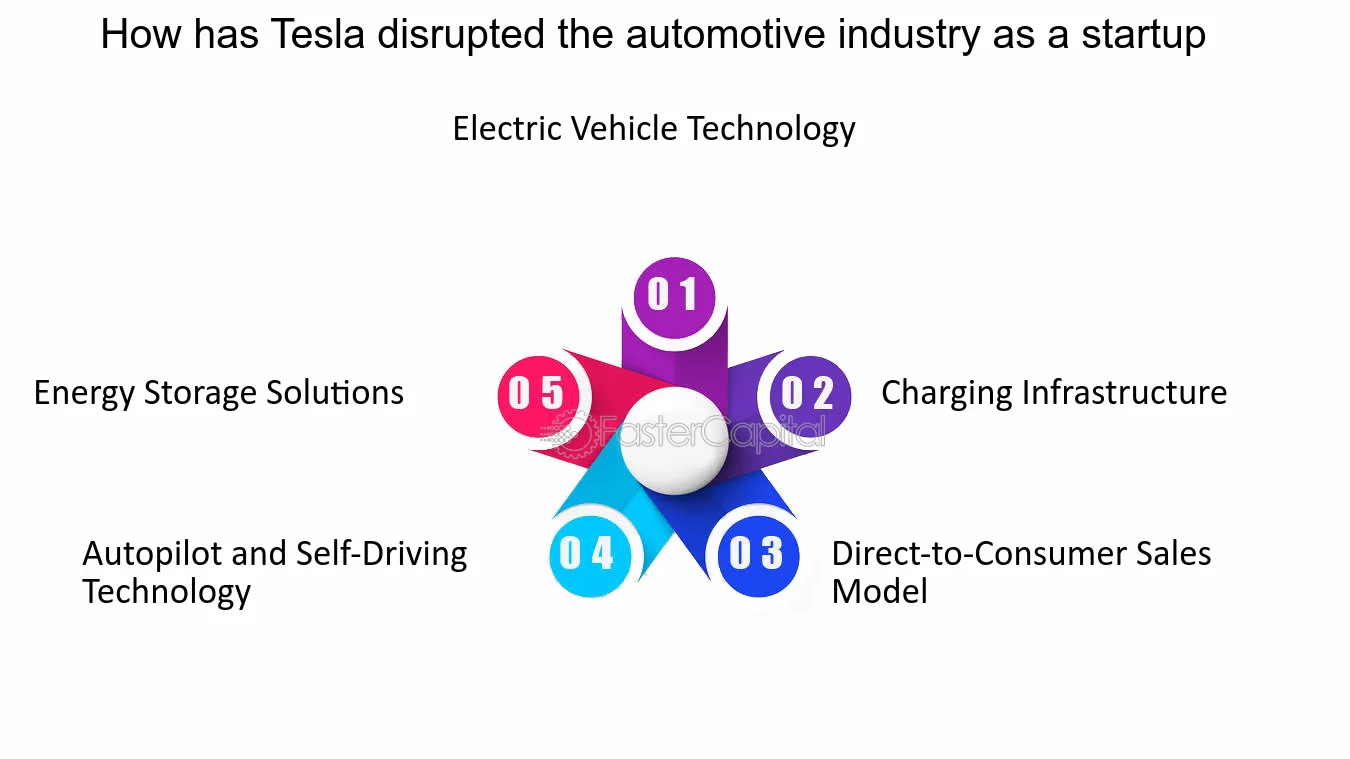Introduction
Tesla Inc., under the leadership of Elon Musk, has emerged as a disruptor in the automotive industry, pioneering electric vehicles (EVs) and advancing sustainable energy solutions. This case study explores Tesla’s disruptive impact on the automotive market and key factors contributing to its success.
Key Elements of Tesla's Market Disruption

- Innovation in Electric Vehicles (EVs): Tesla revolutionized the automotive sector by popularizing electric vehicles with superior range, performance, and design. The introduction of models like the Tesla Roadster, Model S, and Model 3 challenged conventional perceptions of EVs as impractical or underperforming.
- Vertical Integration and Manufacturing Efficiency: Tesla’s vertical integration strategy, including in-house manufacturing capabilities and advanced automation, enhances production efficiency and quality control. This approach enables Tesla to iterate quickly on product improvements and scale production to meet demand.
- Technology and Software Integration: Tesla vehicles incorporate cutting-edge technology, including over-the-air software updates, autonomous driving capabilities (Autopilot), and intuitive user interfaces (Tesla touchscreen). Continuous innovation in software enhances vehicle functionality and user experience.
- Brand and Market Positioning: Tesla positioned itself as a premium and aspirational brand, appealing to environmentally conscious consumers and tech enthusiasts. The brand’s association with innovation, sustainability, and Elon Musk’s visionary leadership reinforces its market appeal and competitive edge.
- Infrastructure Development (Supercharger Network): Tesla invested in a proprietary Supercharger network, providing fast-charging stations globally. This infrastructure addresses range anxiety and supports long-distance travel, enhancing the practicality and appeal of Tesla vehicles.
- Cultural Influence and Market Perception: Tesla’s disruptive impact extends beyond technology and innovation to cultural influence. The company’s bold vision for a sustainable future and ambitious goals, such as achieving mass-market EV adoption, resonates with global trends towards environmental stewardship.
Case Examples of Tesla's Market Disruption

- Model 3: Introduced as a more affordable EV, the Model 3 garnered widespread consumer interest and contributed to Tesla’s expansion into the mass market.
- Gigafactories: Tesla’s Gigafactories represent a paradigm shift in battery production, scaling renewable energy solutions and reducing manufacturing costs.
Challenges and Criticisms
Despite its success, Tesla faces challenges such as production delays, regulatory scrutiny, and profitability concerns. Market volatility, supply chain disruptions, and competition from traditional automakers and new EV entrants pose ongoing challenges to sustained growth.
Conclusion
Tesla’s market disruption underscores the transformative impact of innovation, sustainability, and strategic vision in redefining industries. By challenging automotive norms, prioritizing technological advancement, and fostering a global ecosystem of EV adoption, Tesla continues to shape the future of mobility.
Future Outlook
Looking ahead, Tesla’s focus on expanding its product lineup (e.g., Cybertruck, Model Y), advancing autonomous driving capabilities, and diversifying into renewable energy solutions (e.g., solar panels, energy storage) positions it at the forefront of global efforts towards sustainable transportation and energy independence.
References
- Tesla, Inc. (Official Website)
- Industry Reports and Analysis
- Academic Research on Disruptive Innovation




